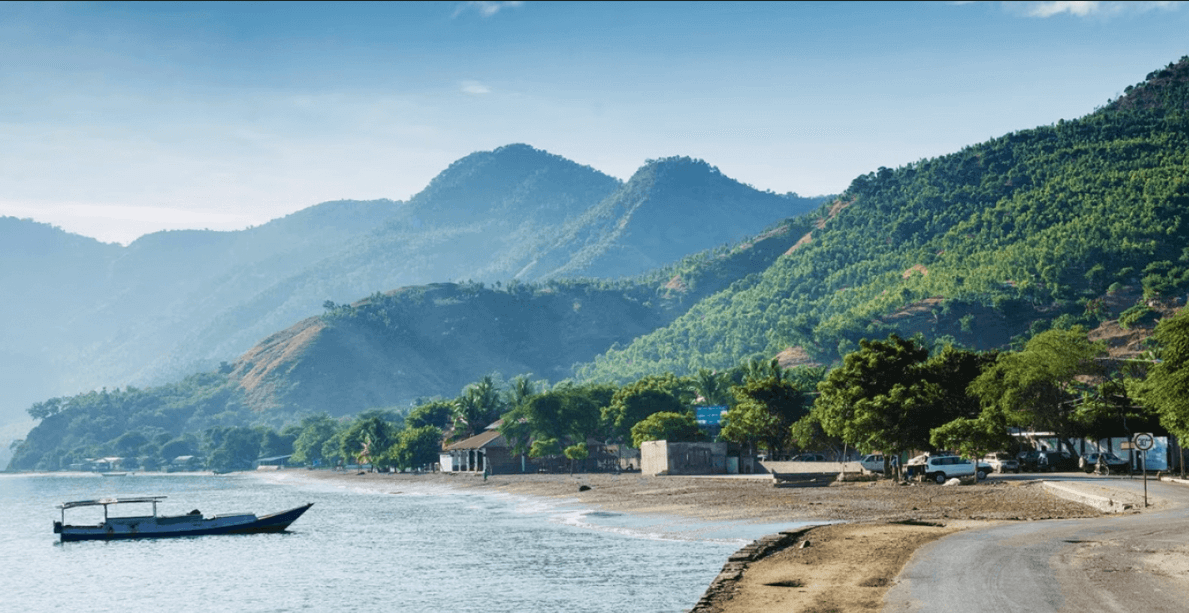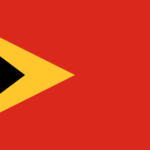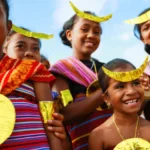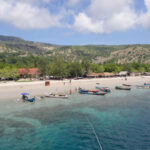Read more about travelling to East Timor From Australia. In this article we cover:
- Flights and Travel Options: Timor-Leste is an “undiscovered” Pacific Island. It offers a unique experience in Southeast Asia, just a 90-minute flight from Darwin with Qantas, as well as Airnorth.
- Timor-Leste: A Country of Contrast: It’s a country of contrasts, blending East Timor’s Portuguese heritage with untouched natural beauty, from coral reefs to hiking mountains.
- Visas: Australian passport holders can get a $30 USD visa on arrival in Dili; direct flights and three different airlines fly from Sydney, Melbourne and Darwin.
- Accommodation: Timor-Leste ranges from five star luxury hotels in Dili to eco-friendly island bungalows and mountain guesthouses.
- Must-visit spots include Dili (capital), Atauro Island (diving/snorkeling), Jaco Island (pristine beaches), Maubisse (coffee country), and Baucau (colonial charm).
- Activities: Experience world-class diving Atauro Island, unique coffee culture, Mt Ramelau treks, traditional crafts, and whale watching.
- Food & Drink: Enjoy delicious Timorese cuisine, especially fresh seafood and organic coffee, often at local markets and beachside grills.
Finding the Pacific’s Best Kept Secret

The hidden treasure of East Timor offers what other destinations cannot. That rare, electric feeling that you have stumbled upon something extraordinary that few others had discovered. Timor-Leste feels like stepping into an alternate universe where Southeast Asia’s natural beauty remains untouched and new authentic experiences wait round every corner.
Just a 90-minute flight from Darwin, this young nation offers Australian travelers an accessible escape that feels worlds away from the well-worn tourist paths. Imagine the Bali of 30 years ago, before the Instagram crowds and beach clubs—that’s Timor-Leste today, with its untouched coastlines, vibrant coral reefs, mist-shrouded mountains, and genuinely warm local welcome is waiting for you.
A Country of Contrasts
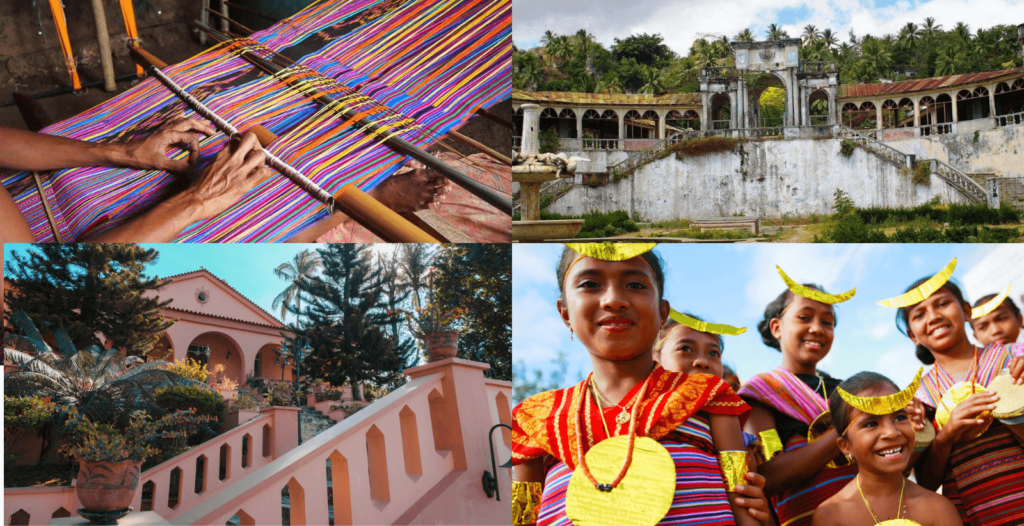
Timor-Leste has a fascinating blend of influences: Portuguese colonial heritage mingled with indigenous traditions. The country’s recent independence (2002) adds a layer of youthful energy and rebuilding. Timor-Leste’s landscape is equally diverse, from the crystal-clear waters of Atauro Island (rated among the most biodiverse marine environments on earth!) to the rolling coffee plantations of Maubisse in the central highlands.
When to visit: The dry season (May – November) has the most reliable weather, with June – August being particularly ideal weather for travellers. The wet season (December – April) brings lush green landscapes but can make mountain roads challenging.
Language: While Tetum and Portuguese are official languages, you’ll find English commonly spoken in touristy areas, especially in Dili. However learning a few Tetum phrases will earn you warm smiles from the locals.
Currency: US Dollar is the official currency. Australians should exchange money before arrival or use ATMs in Dili. Find out more about where to find ATMs, banks and the best exchange rate at Currency and Banks of Timor-Leste.
Getting There

For Aussies, Timor-Leste is surprisingly accessible. Qantas as well as Airnorth operates direct flights from Darwin to Dili (1 hour and 20 minutes duration), making it closer than Bali for many northern Australians. Connections are also available via Bali or Singapore for those coming from other Australian cities.
Visa information: Australian passport holders can obtain a $30 USD tourist visa on arrival, valid for 30 days and extendable for up to 90 days. Insure to bring US dollar bills for the visa fee and for this reason and make sure to withdraw USD before arrival to the country.
Arrival tips: Presidente Nicolau Lobato International Airport is small but efficient. Have your accommodation details ready for the arrival card, and don’t be surprised by the relaxed pace you’ve officially entered island time!
Where to Stay
Dili Delights
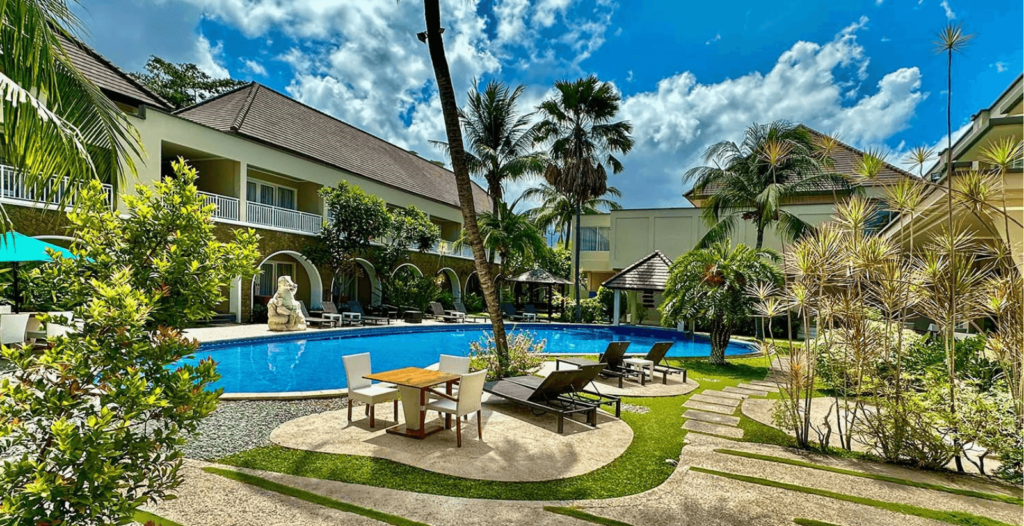
Dili offers the widest range of accommodations, from backpacker-friendly guesthouses to upscale hotels and relaxation retreats:
Luxury: The Timor Plaza Hotel offers modern comforts with a rooftop pool overlooking the city, while Hotel Esplanada provides colonial charm with seaside views.
Mid-range: Arbiru Beach Resort combines beachfront location with comfortable rooms, perfect for those wanting to be near the water.
Budget: Dili Central Backpackers and East Timor Backpackers offer clean, affordable dorms and private rooms, plus valuable local knowledge from staff and fellow travelers.
Island Escapes
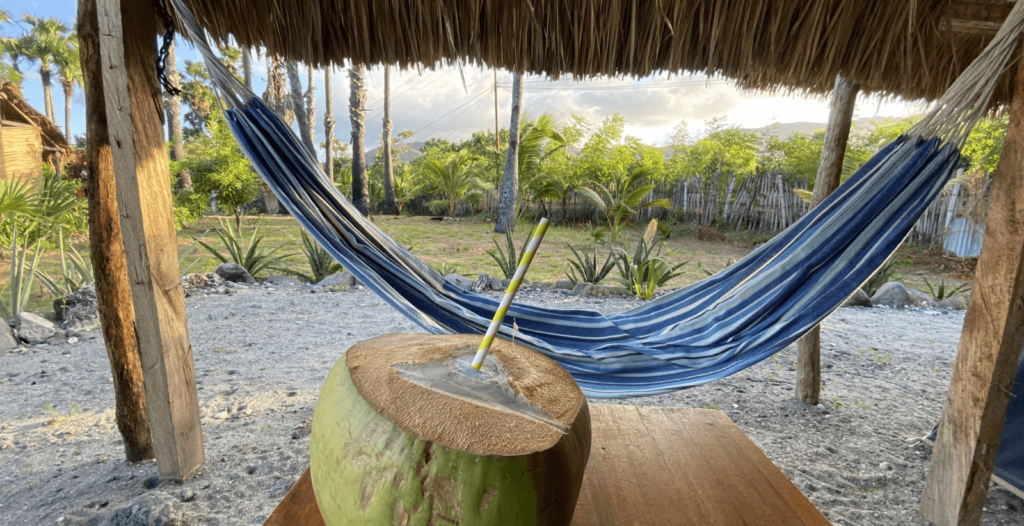
Atauro Island is a 90-minute boat ride from Dili, offering several eco-friendly options:
Barry’s Place is the island’s pioneer in sustainable tourism, with bungalows right on the beach and family meals featuring freshly caught seafood.
Beloi Beach Hotel provides more amenities while maintaining an eco-conscious approach.
Mountain Retreats
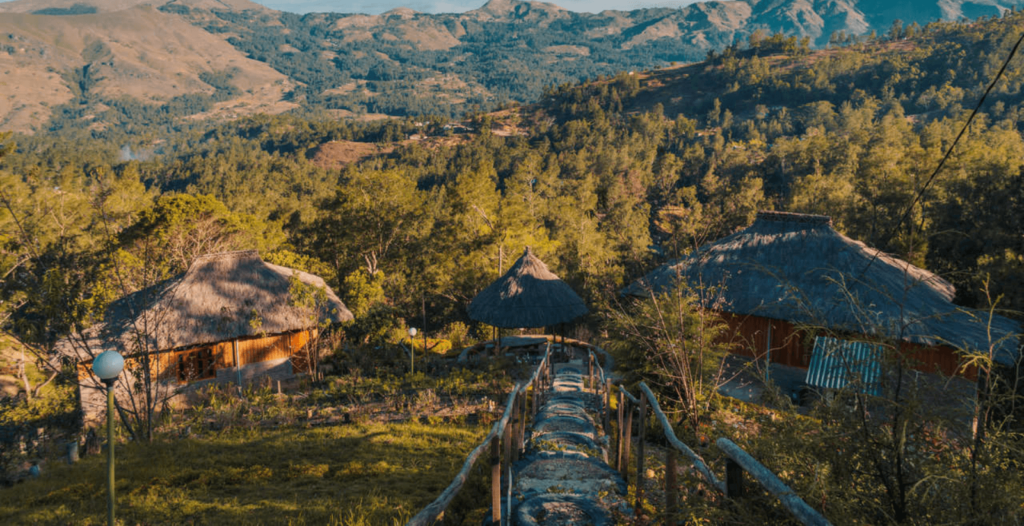
In the cool mountain regions:
Pousada de Maubisse, a restored Portuguese guesthouse, offers colonial charm and spectacular mountain views.
Various homestays in coffee-growing regions provide authentic experiences with local families, though basic facilities should be expected.
Must-Visit Destinations
Dili: The Vibrant Capital
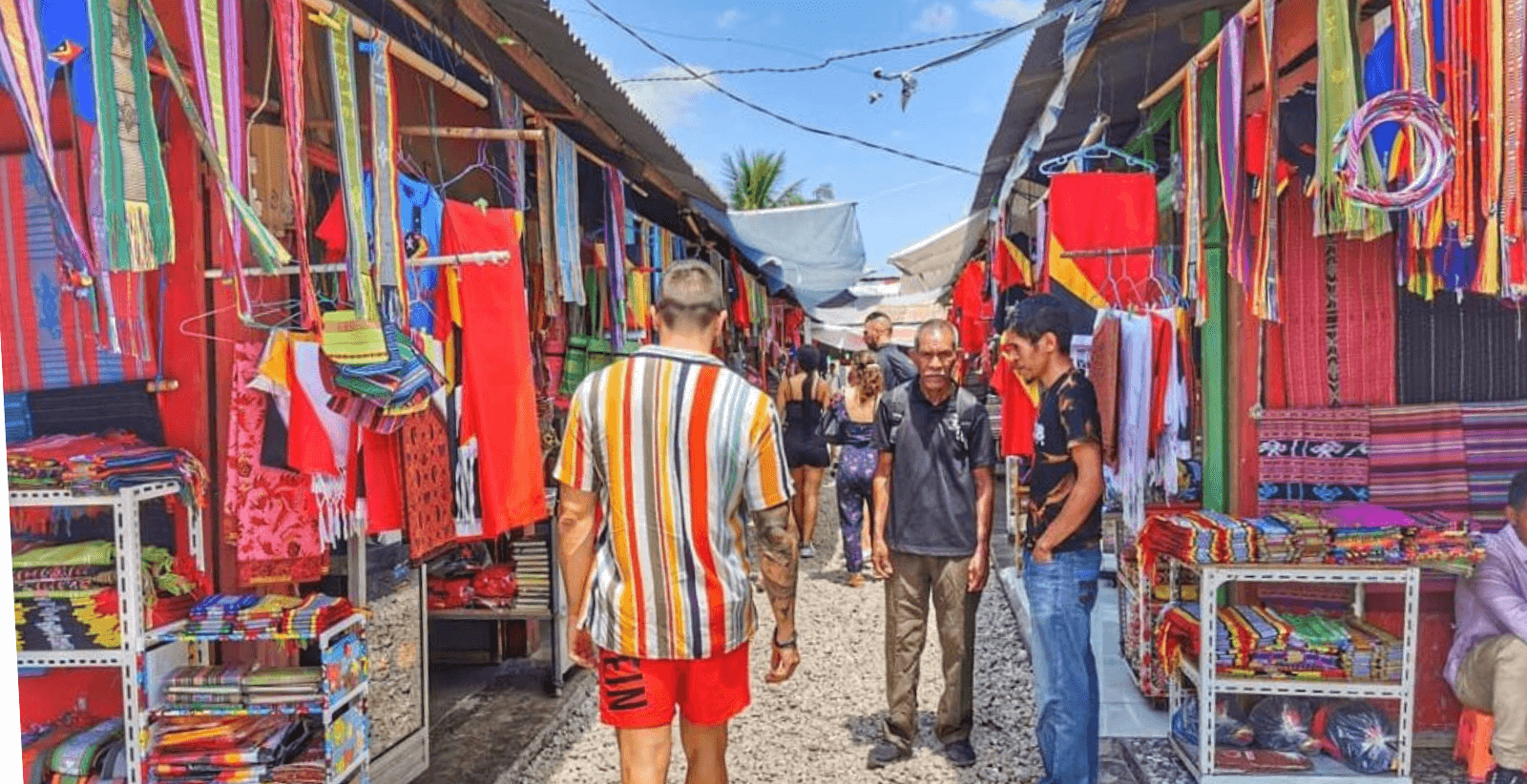
Dili blends urban energy with a laid-back beach town feel. Don’t miss:
• Cristo Rei – A 27-meter statue of Jesus overlooking the city, offering panoramic views after a 500-step climb
• Tais Market – Shop for traditional hand-woven textiles that make perfect souvenirs
• Santa Cruz Cemetery – A moving historical site commemorating the 1991 massacre that brought international attention to Timor-Leste’s struggle
• Areia Branca Beach – A local favorite for sunset drinks and seafood
Atauro Island – Diver’s Paradise
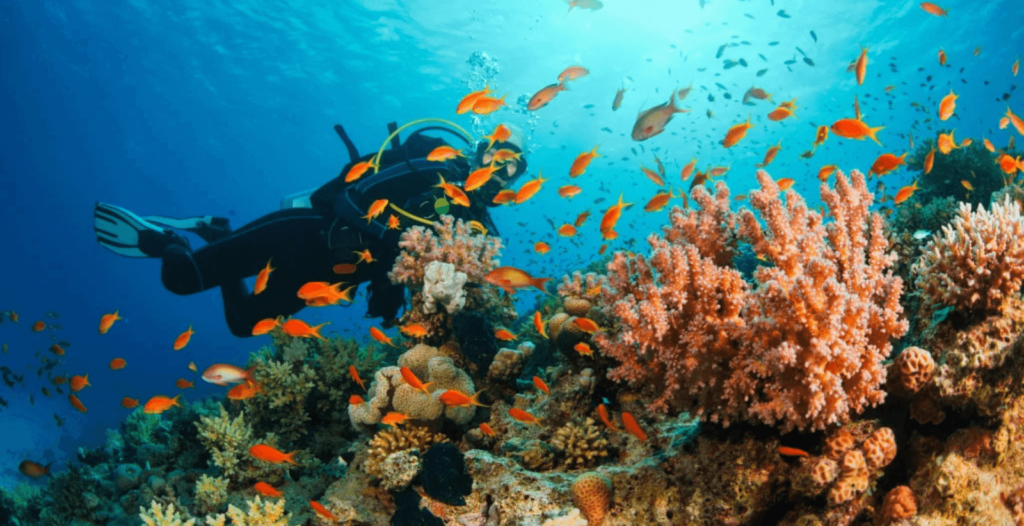
Just 25km north of Dili lies Atauro Island, home to some of the most biodiverse reefs on the planet. Scientists have recorded more species of reef fish here than anywhere else on Earth! Even if you’re not a diver, the snorkeling is extraordinary right off the beach.
The island’s relaxed pace of life, absence of cars (most transport is by foot or motorbike), and genuine community-based tourism initiatives make it a highlight for many visitors. We recommend that you stay at least two nights to truly unwind into the island rhythm.
Jaco Island – Untouched Paradise
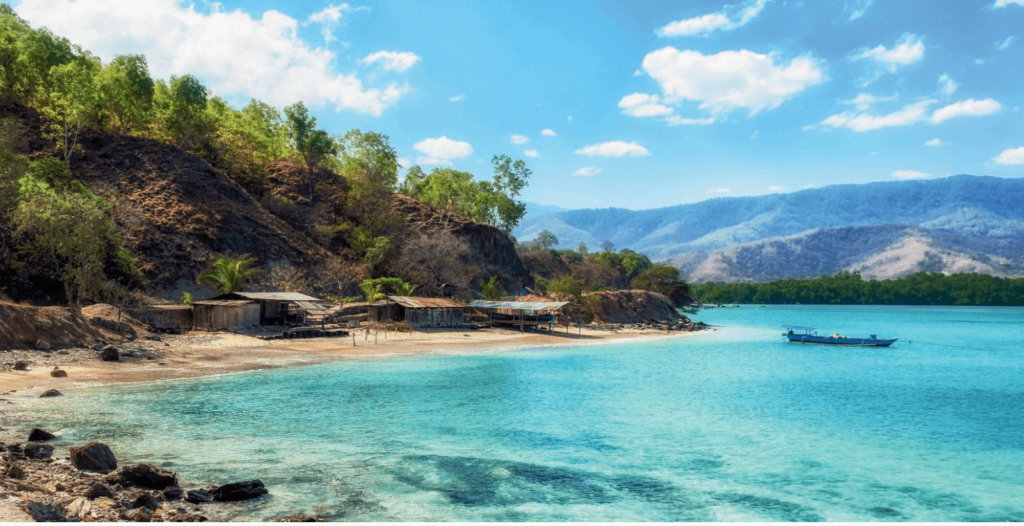
At Timor-Leste’s easternmost point lies Jaco Island. Jaco Island is considered sacred by locals and therefore uninhabited. The journey to reach this paradise requires a 7-hour drive from Dili to Tutuala, followed by a short boat ride. However, you’ll be rewarded with what might be Southeast Asia’s most perfect beach, and you’ll likely have it all to yourself.
Stay on the mainland opposite the island (Jaco itself is too sacred for overnight stays) where there is a variety of accommodation options waiting:
- Jaco Beach Resort Hotel
- Guest House Valu
- Lakumorre Guest House
Or camp on the mainland beach for an unforgettable experience under the stars.
Maubisse – Coffee Country
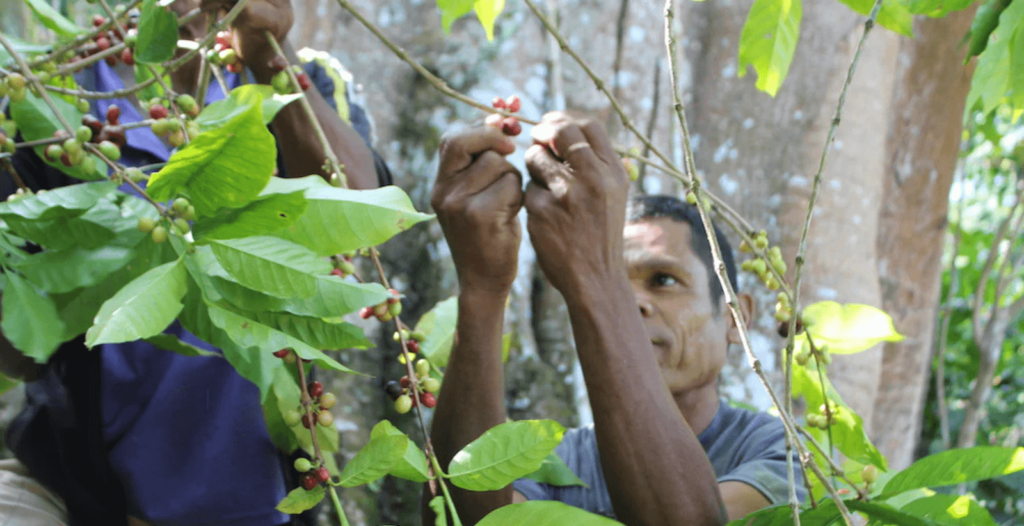
The cool mountain town of Maubisse (about 2 hours from Dili) sits at 1,400 meters above sea level, offering relief from coastal heat and a glimpse into Timor-Leste’s emerging specialty coffee industry. The Portuguese colonial pousada provides a perfect base for exploring coffee plantations, hiking to traditional villages, and enjoying spectacular mountain vistas.
Coffee lovers shouldn’t miss a plantation tour to see how Timor-Leste’s organic, shade-grown arabica is cultivated, harvested, and processed with plenty of tasting opportunities!
Baucau: Colonial Charm
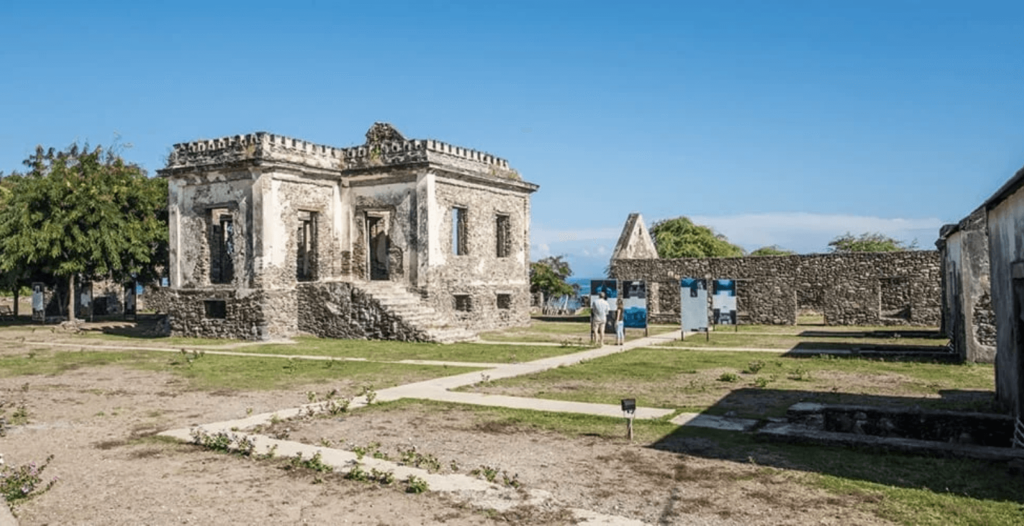
Timor-Leste’s second-largest city retains significant Portuguese charm, with a picturesque old town of colonial buildings painted in faded pastels. The natural freshwater swimming pool at Piscina de Baucau offers a refreshing dip with a side of history it was built during Portuguese times and remains a community gathering spot.
Don’t miss the stunning coastal drive between Dili and Baucau, which rivals the Great Ocean Road for dramatic scenery but without another tourist in sight.
Unmissable Experiences
Diving and Snorkeling
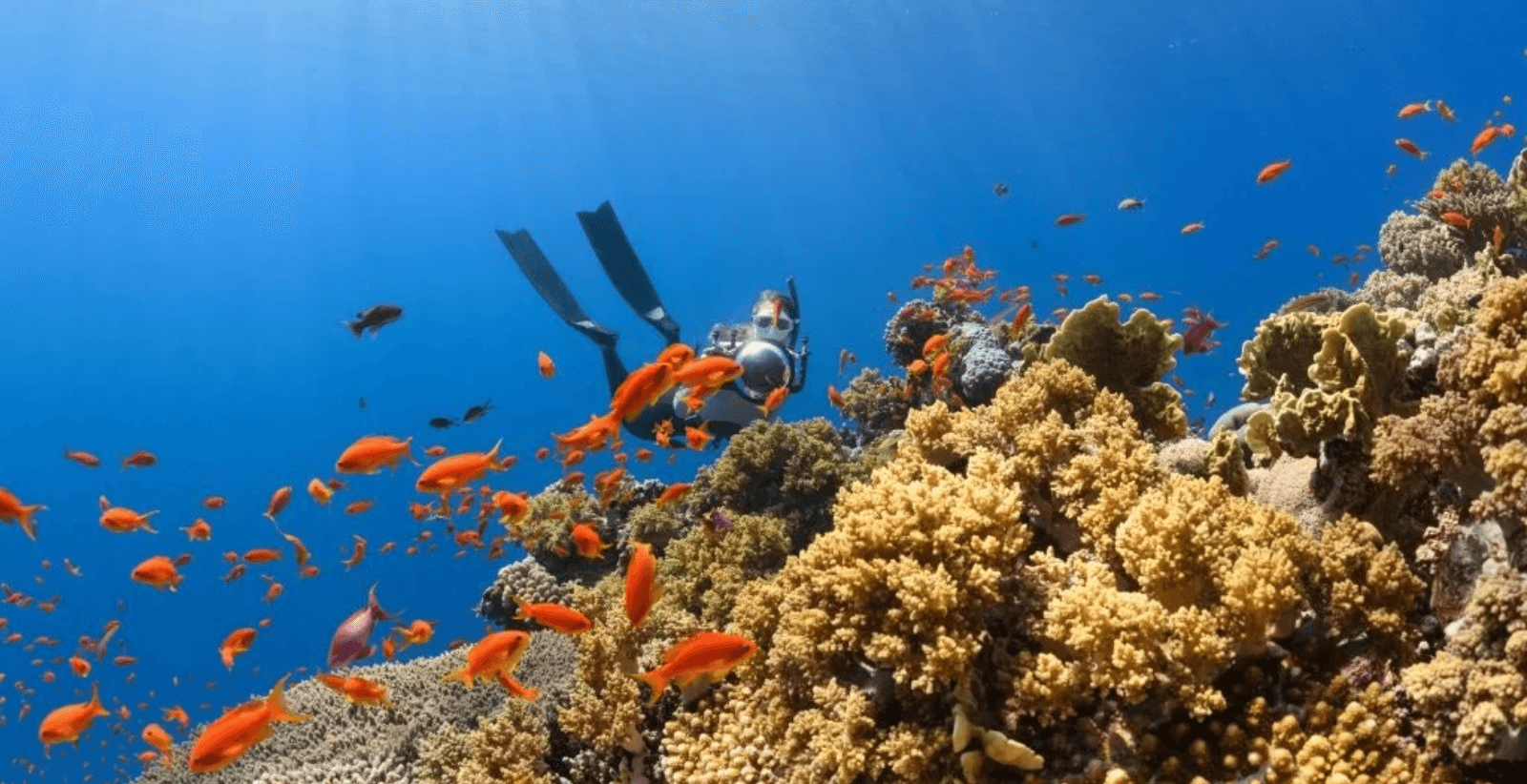
With visibility often exceeding 30 meters and minimal tourism impact, Timor-Leste offers world-class diving without the crowds. Atauro Island and the north coast are dotted with pristine reefs, while more experienced divers can explore WWII wrecks near Dili.
Dive operators: Dive Timor Lorosae and Atauro Dive Resort offer professional PADI courses and guided experiences for all levels. Even snorkelers will be amazed by the marine life accessible from shore at sites like Beloi and Back Beach.
Coffee Culture
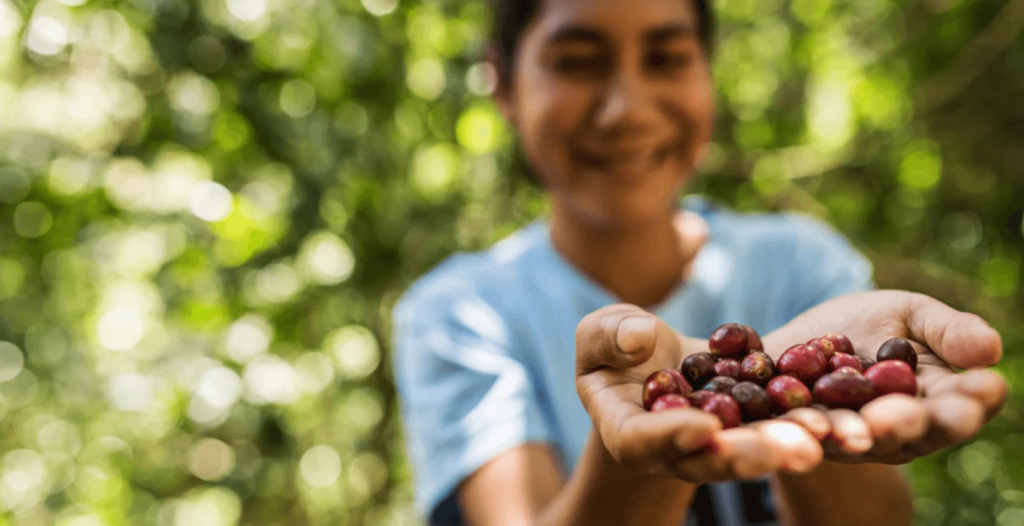
Coffee isn’t just a drink in Timor-Leste—it’s a way of life and a crucial export. The high-altitude regions produce exceptional arabica beans that are gaining international recognition for their complex flavor profile.
Visit a cooperative like Cooperativa Café Timor (CCT) to see how coffee cultivation is helping rebuild the nation’s economy while maintaining traditional organic farming methods. The “farm-to-cup” tours around Maubisse and Aileu reveal every stage of production, culminating in possibly the freshest cup of coffee you’ll ever taste.
Trekking Mount Ramelau
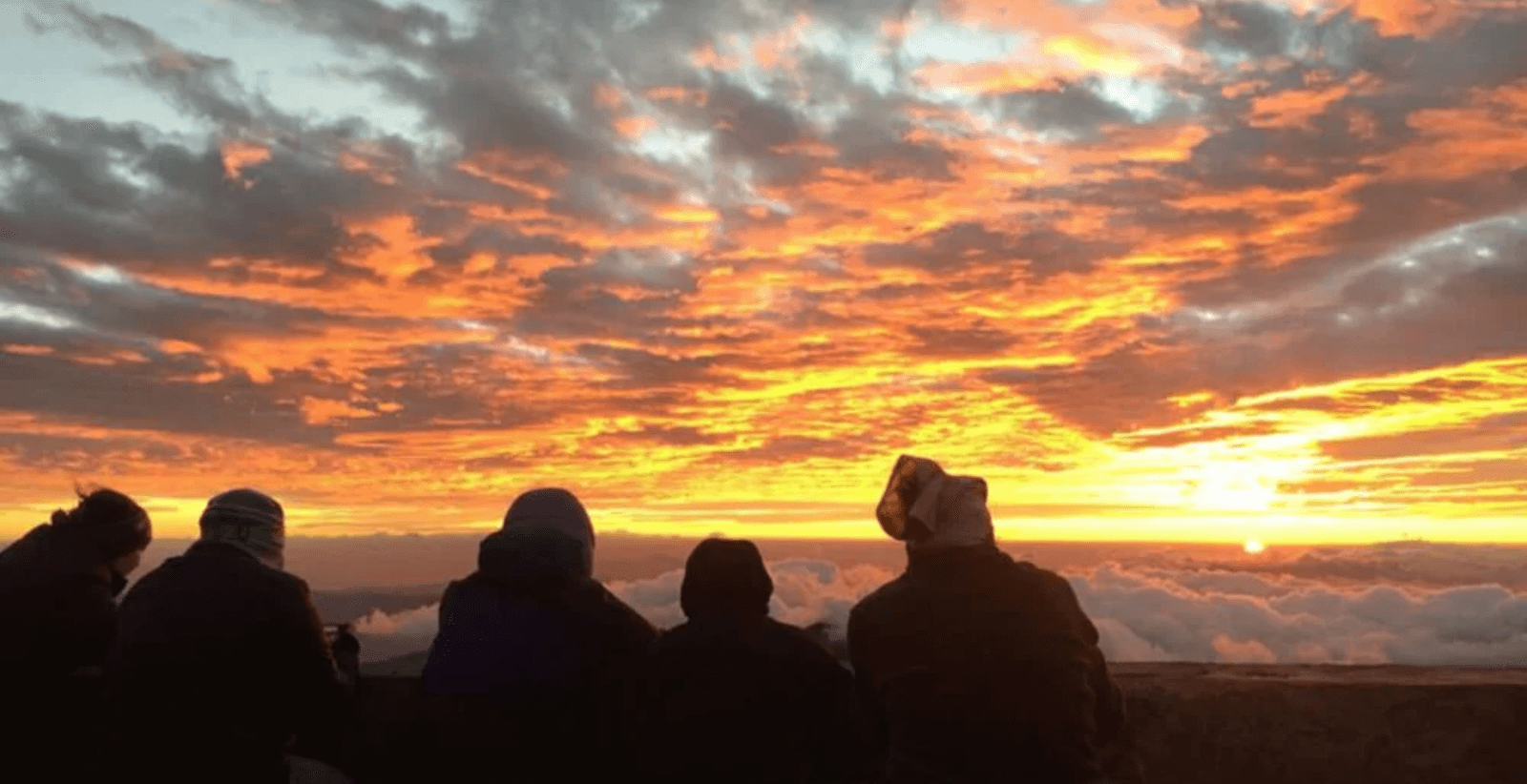
At 2,986 meters, Mount Ramelau (locally known as Tatamailau) is Timor-Leste’s highest peak and a symbol of national pride. The trek to the summit is challenging but manageable for reasonably fit hikers, with most people starting the final ascent pre-dawn to reach the top for sunrise.
As golden light spills across the island’s spine, you’ll understand why this mountain is considered sacred. On clear days, you can see both the north and south coasts of the island from the summit.
Arrange guides through guesthouses in Hato Builico, the mountain village that serves as base camp.
Traditional Craft Workshops
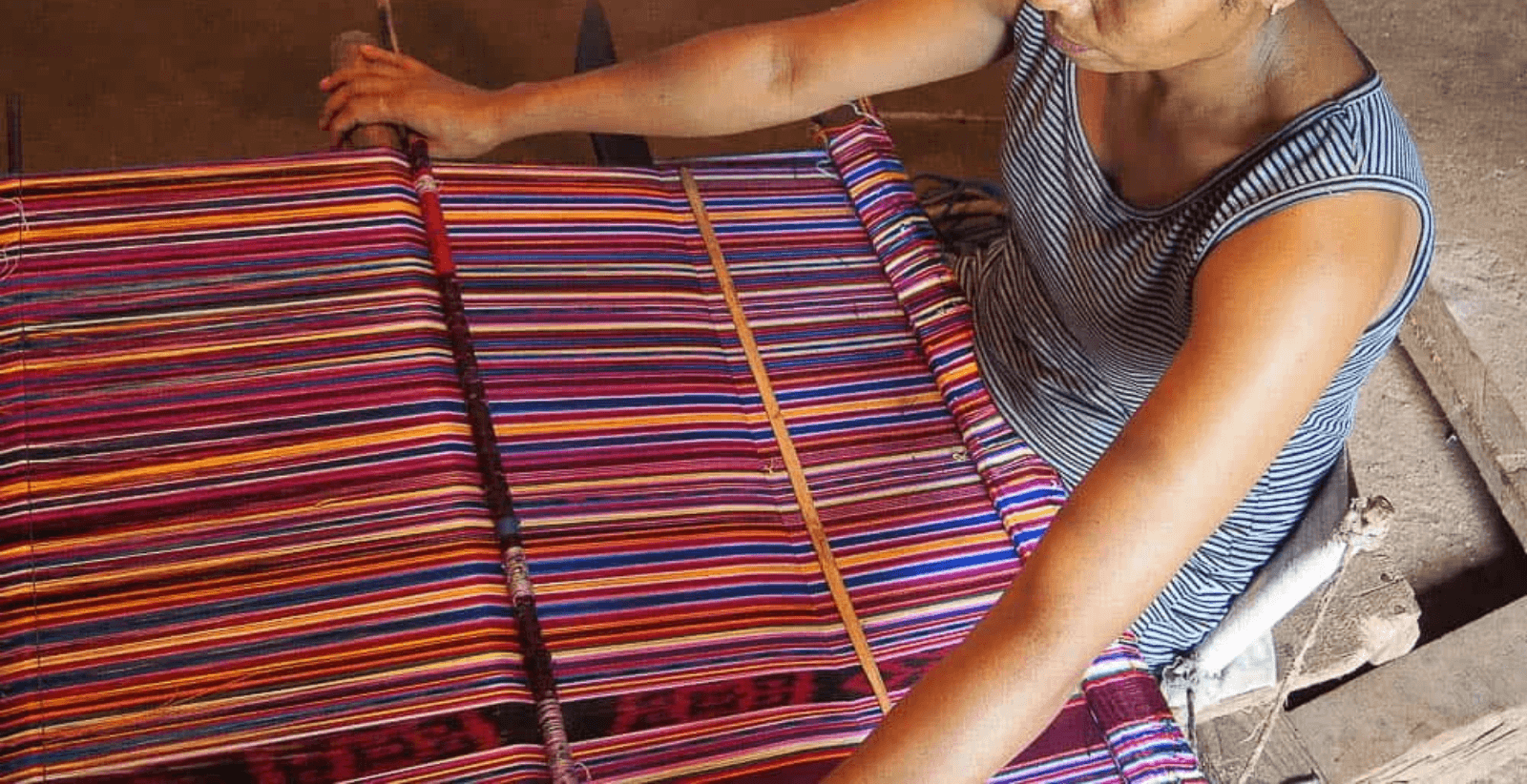
Tais weaving is Timor-Leste’s most celebrated traditional craft—these intricately patterned textiles tell stories of local culture and history. Various women’s cooperatives offer workshops where you can learn basic weaving techniques and understand the significance of different patterns.
The Boneca de Atauro doll-making cooperative on Atauro Island is another inspiring initiative, where local women create unique fabric dolls that support sustainable livelihoods.
Whale Watching
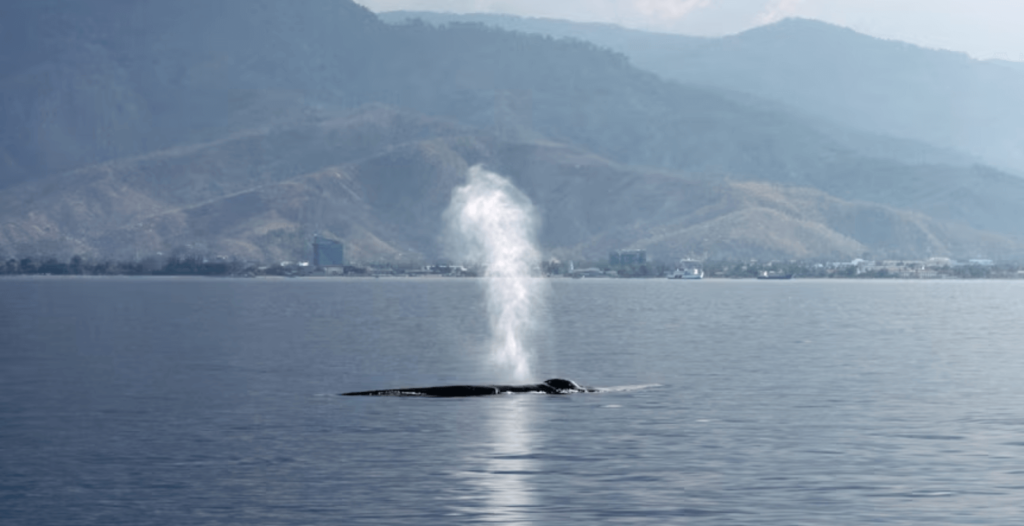
The deep waters of the Ombai-Wetar Strait between Timor-Leste’s mainland and Atauro Island serve as a migratory corridor for over 20 species of whales and dolphins. Between September and November, the chances of spotting blue whales, sperm whales, and super-pods of dolphins are excellent.
Eco-friendly operators like The Boat King offer responsible whale watching tours that include marine biologists who contribute to ongoing research about these magnificent creatures.
Food & Drink Guide
Timorese Cuisine: A Fusion of Flavors
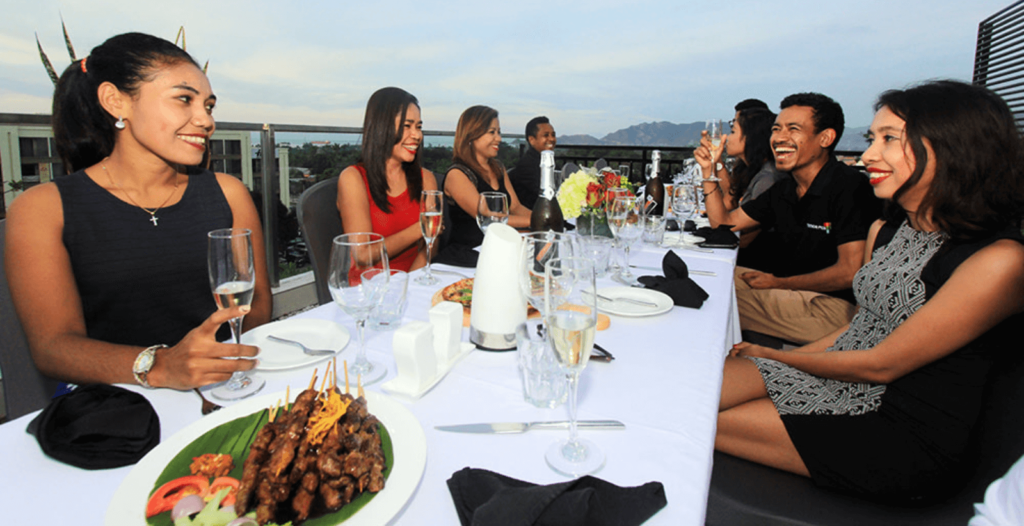
Timorese cuisine blends Portuguese influences with indigenous cooking traditions and ingredients. Must-try dishes include:
• Ikan Sabuko – Fresh fish cooked in tamarind sauce
• Batar Da’an – Corn and pumpkin stew with beans and coconut milk
• Koto – Red bean stew with pork and vegetables
• Budu – Spicy tomato and mint salsa that accompanies many dishes
In Dili, restaurants like Agora Food Studio and Castaway showcase modern interpretations of traditional flavors, while beachside warungs (small family-owned restaurants) offer fresh seafood at unbelievable prices.
Coffee Culture
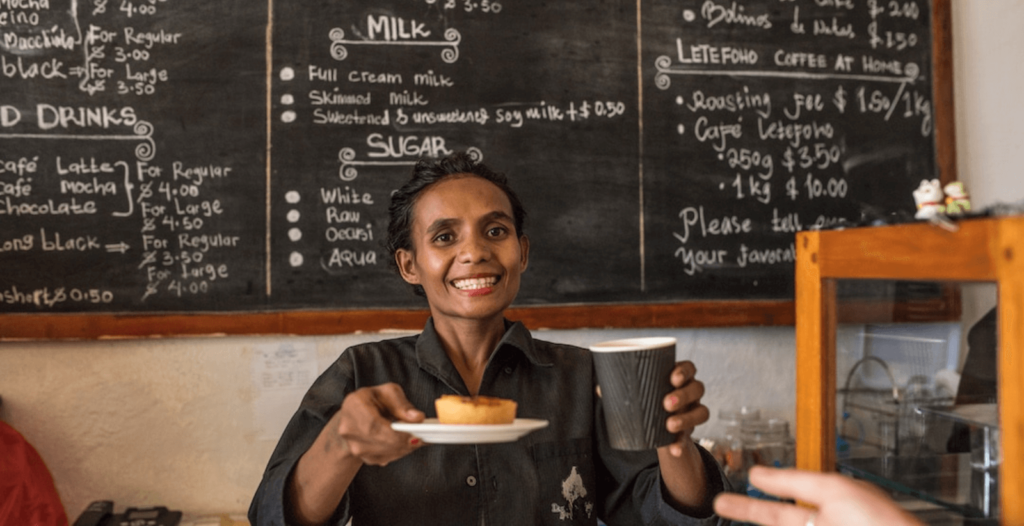
Timor-Leste’s coffee deserves special mention—the high-altitude arabica is organic by default (most farmers can’t afford chemicals) and has a distinctive smooth, low-acid profile with chocolate and spice notes.
Experience a traditional coffee ceremony in mountain villages, where it’s prepared with freshly roasted beans ground by hand and brewed in a simple pot. In Dili, cafés like Letefoho Specialty Coffee Roaster serve single-origin beans from specific regions, allowing you to taste the terroir differences.
Seafood Feasts
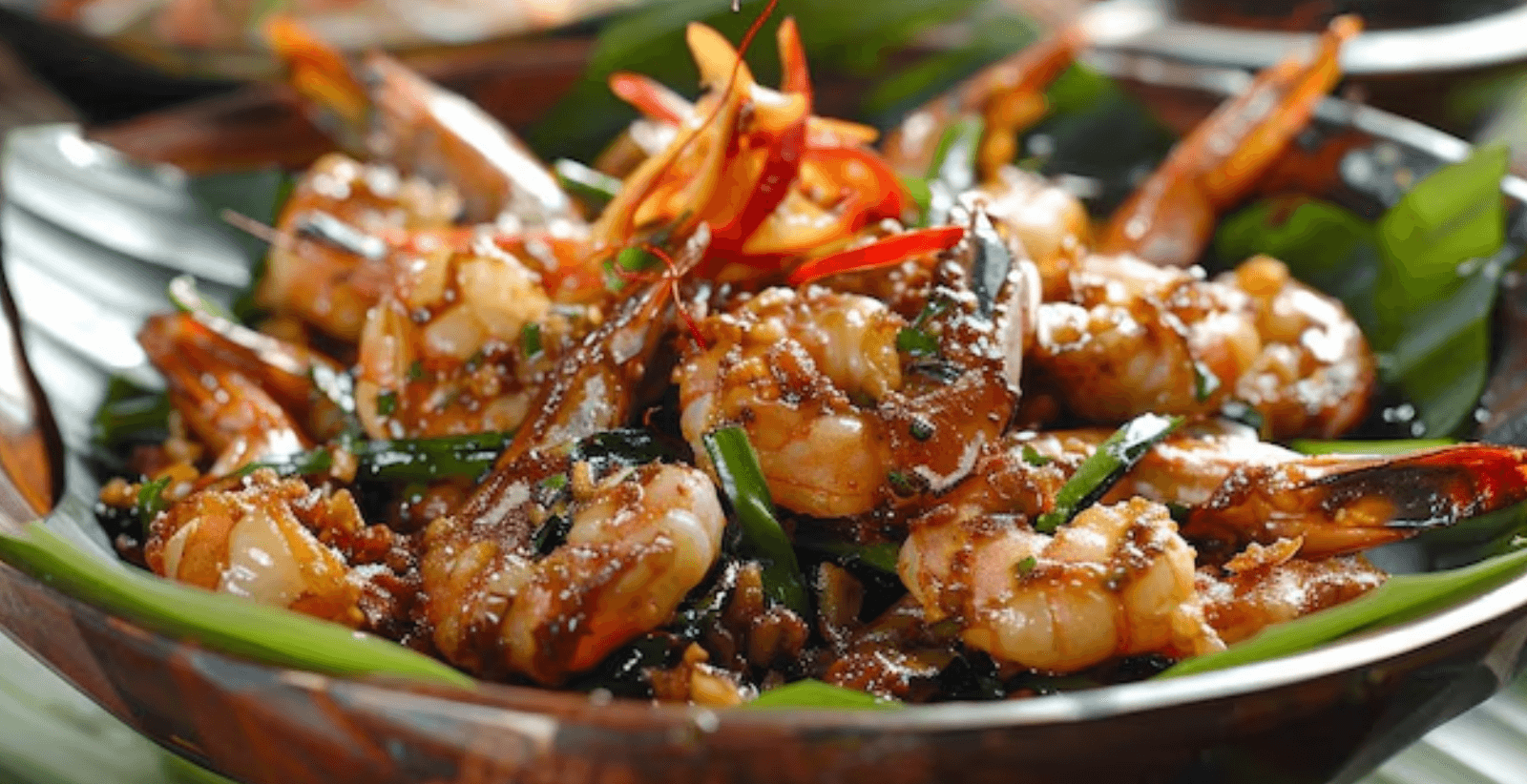
With 700km of coastline, it’s no surprise that seafood features prominently in Timorese cuisine. Beach restaurants in Dili, particularly along Areia Branca, set up fresh seafood grills each evening where you can select your dinner directly from the day’s catch.
On Atauro Island, community-run restaurants often serve family-style seafood feasts with the day’s catch prepared simply but perfectly—grilled with lime, garlic, and local herbs.
Local Markets
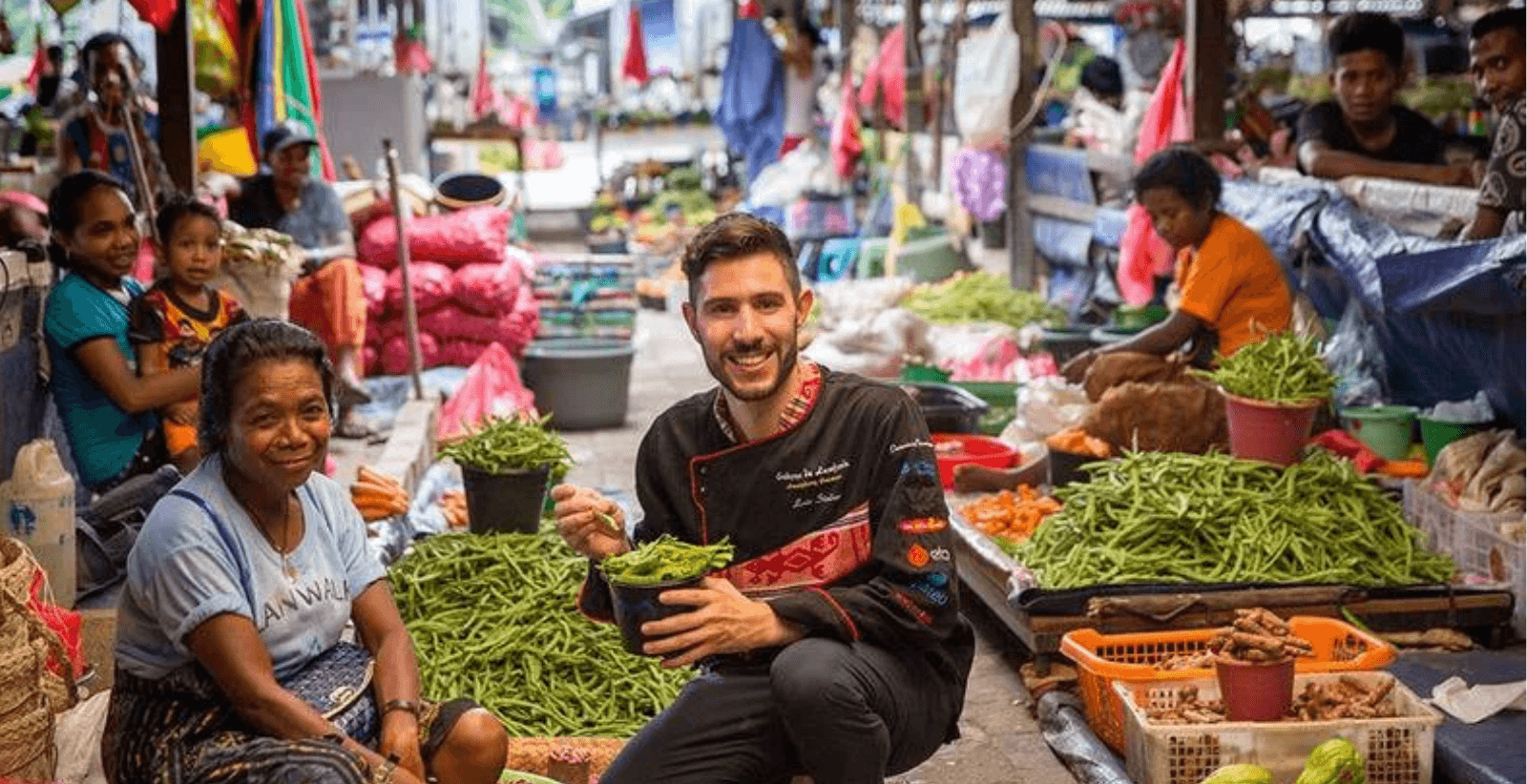
Portuguese chef Luís Simões has been touring the country and markets.
For an authentic taste of local life, visit Dili’s Taibesi Market (the main produce market) or the smaller neighborhood markets that pop up daily. Here you’ll find tropical fruits, fresh vegetables, and local specialties like kamii (candlenuts) and ai-farina (breadfruit).
The Tais Market and Colmera area are best for souvenirs, especially the distinctive hand-woven tais textiles that make perfect gifts.
Getting Around
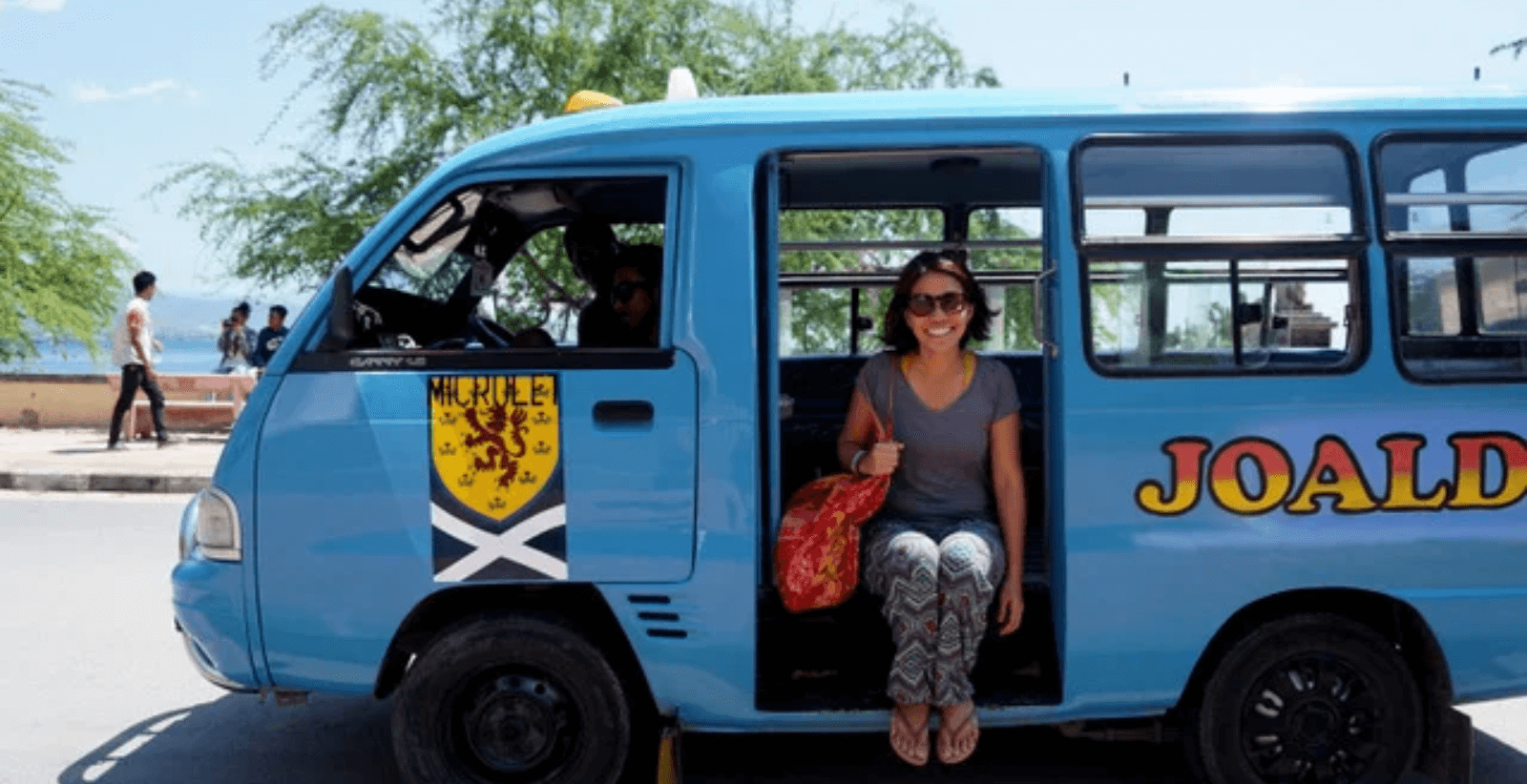
In Dili
Dili is relatively compact, with many attractions within walking distance along the waterfront. For longer trips:
• Mikrolets (minibuses) run set routes around town for about 25 cents per trip—just flag one down and hop in
• Taxis are plentiful and affordable (negotiate the fare before departing)
• Motorbike rental costs around $15-25 USD per day and offers the most flexibility
Beyond the Capital
• Car rental with driver is recommended for mountain regions ($80-120 USD per day)
• Timor Tour & Travel and other agencies offer reliable vehicles with experienced drivers who double as informal guides
• Public buses connect major towns but run on flexible schedules and can be very crowded
• Boat services to Atauro Island run several times weekly (the Laju Laju fast boat on Saturdays, slower options other days)
Practical Tips for Australian Travelers
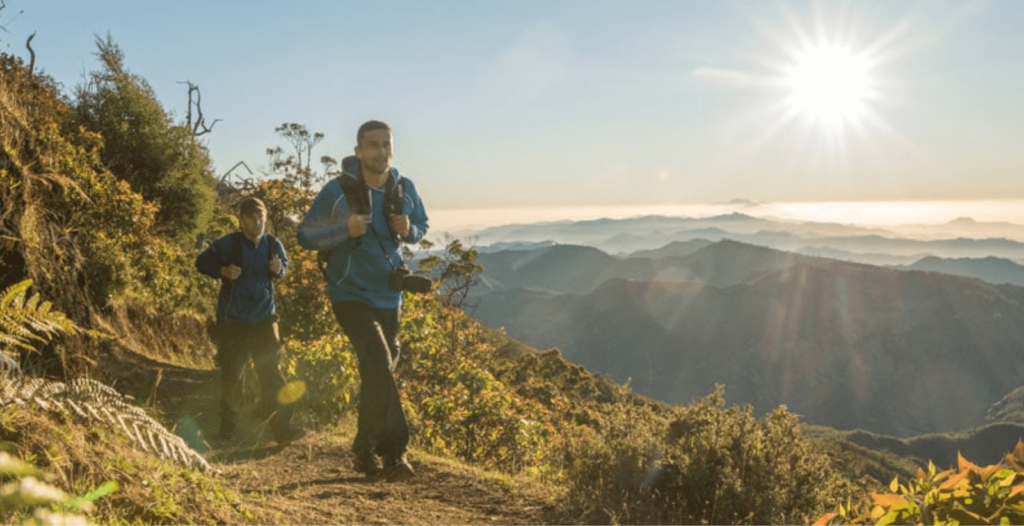
Money Matters
• ATMs are available in Dili but rare elsewhere—carry sufficient US dollars for your trip
• Crisp, undamaged USD notes are essential (torn or marked bills may be rejected)
• Credit cards are accepted only at larger hotels and restaurants in Dili
• Budget around $40-100 USD per day depending on your travel style
Connectivity
• Local SIM cards (Telkomcel or Timor Telecom) are inexpensive and provide good coverage in populated areas
• Many accommodations offer Wi-Fi, though speeds may be slower than you’re used to
• Consider downloading offline maps, translation apps, and entertainment before arrival
Cultural Etiquette
• Dress modestly, especially outside beach areas (shoulders covered for women)
• Ask permission before photographing people
• Learn basic Tetum greetings: “Bondia” (good morning), “Obrigadu/a” (thank you)
• Remove shoes when entering homes
• Use your right hand for eating and passing objects
Health Precautions
• Bring all necessary medications—pharmacies have limited supplies
• Pack reef-safe sunscreen, insect repellent, and a basic first aid kit
• Drink bottled or purified water
• Consider malaria prophylaxis for rural areas (consult your travel doctor)
Suggested Itineraries
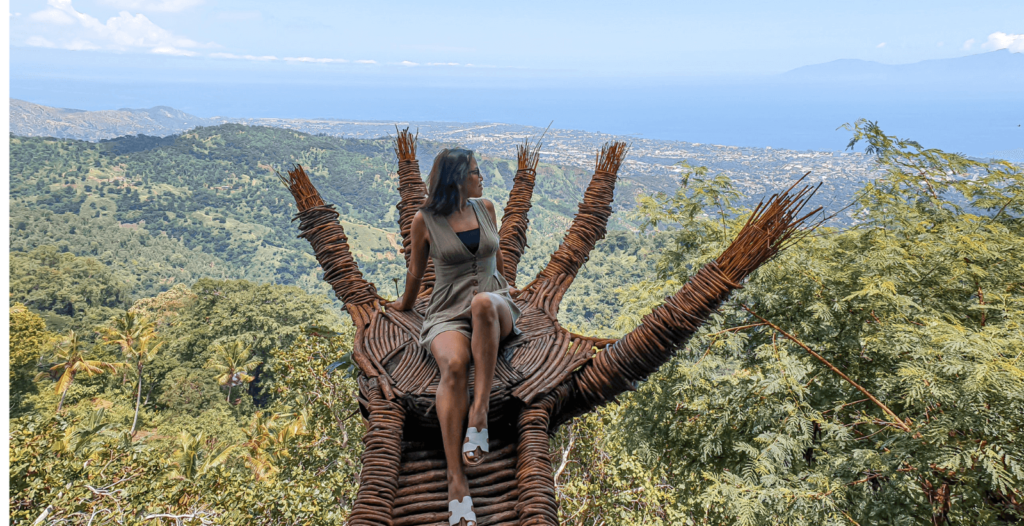
Weekend Escape (3 Days)
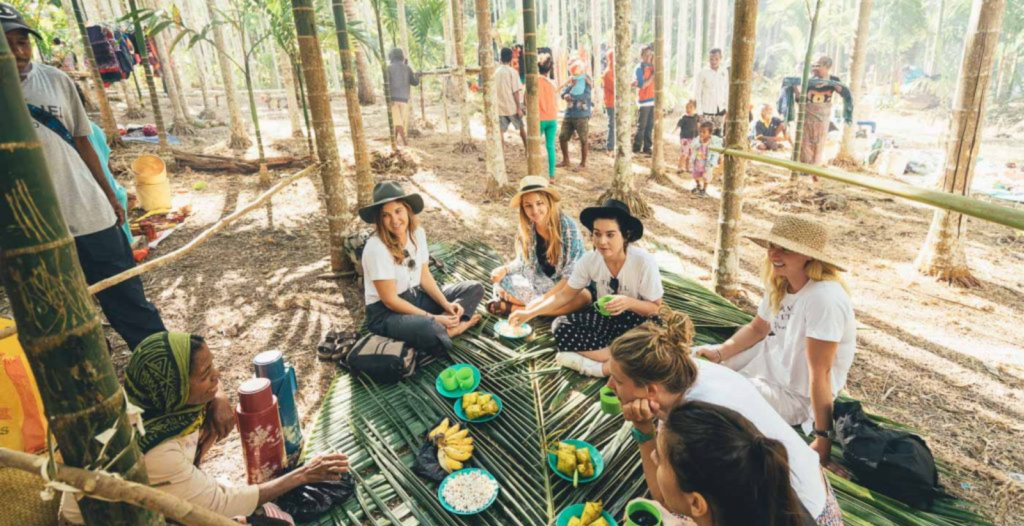
Perfect for Backpackers & Adventure Travellers:
• Day 1: Arrive Dili, explore waterfront, sunset at Areia Branca Beach
• Day 2: Day trip to Atauro Island for world-class snorkeling
• Day 3: Morning Cristo Rei hike, afternoon Tais Market, evening flight home
Cultural Immersion (7 Days)
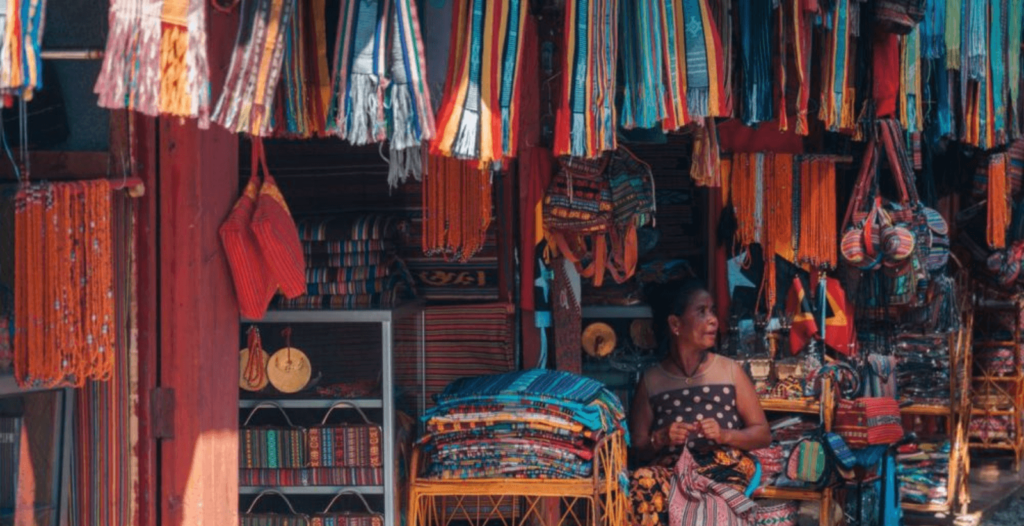
Ideal for a Couples Getaway:
• Days 1-2: Dili exploration (Resistance Museum, Santa Cruz Cemetery, Tais Market)
• Days 3-4: Maubisse coffee country, Portuguese pousada stay
• Day 5: Baucau’s colonial architecture and natural pool
• Days 6-7: Return to Dili via coastal road, final shopping and relaxation
Complete Timor-Leste Adventure (10 Days)
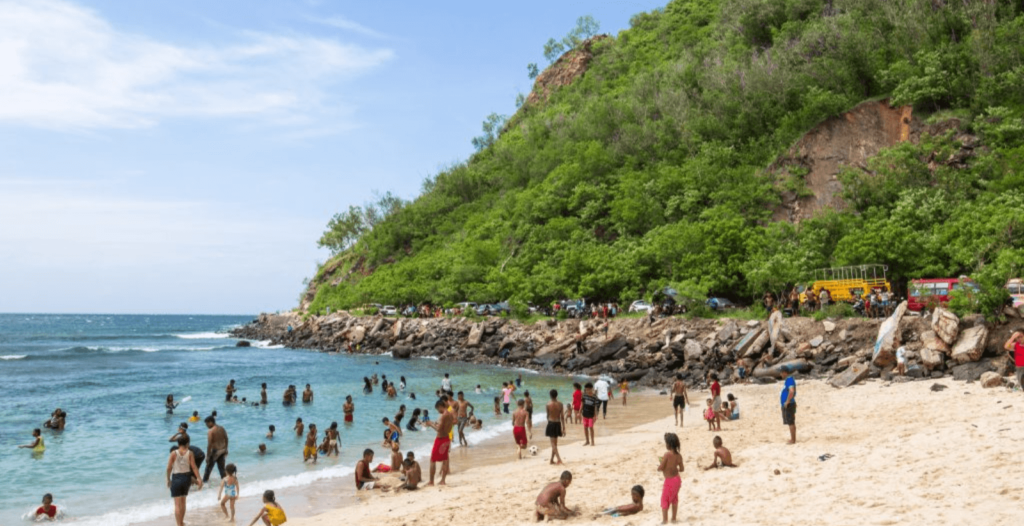
Great for Budget Travellers:
• Days 1-2: Dili highlights and local food exploration
• Days 3-5: Atauro Island diving, snorkeling, and village homestay
• Days 6-7: Mountain adventures in Maubisse and Hato Builico
• Days 8-10: Eastern adventure to Jaco Island, returning via Baucau
Why Choose Timor-Leste Over Bali ?
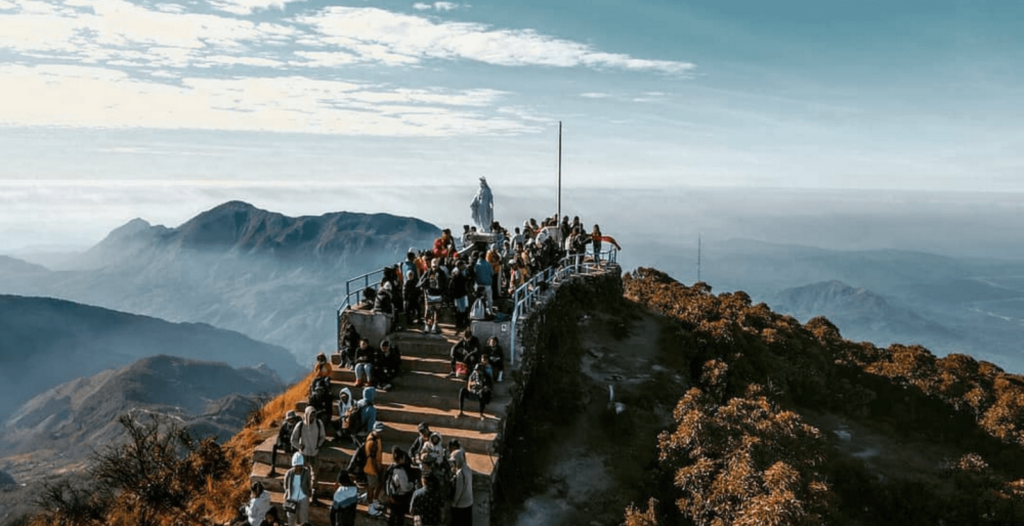
On the left, show a crowded Bali beach filled with tourists, beach chairs, and vendors. On the right, capture an equally beautiful but completely empty Timor-Leste beach with pristine sand and clear water. The contrast should be striking while showing that both destinations offer beautiful beaches, but with very different experiences.)
After multiple visits to both destinations, I can confidently say Timor-Leste offers Australian travelers something increasingly rare in Southeast Asia—authenticity and space to breathe. Here’s why you might choose it over Bali for your next escape:
• Genuine welcome – Tourism is still relatively new, so interactions feel authentic rather than transactional
• Uncrowded experiences – Imagine having world-class dive sites, pristine beaches, and scenic viewpoints all to yourself
• Value for money – While not as developed as Bali, your dollar stretches further for accommodations and activities
• Bragging rights – Be among the first to discover what will inevitably become the next must-visit destination
• Meaningful impact – Your tourism dollars directly support a young nation’s sustainable development
That said, Timor-Leste isn’t for everyone. If you require luxury resorts, nightlife, or shopping malls, stick with Bali. But if you’re seeking adventure, authenticity, and the road less traveled, Timor-Leste will reward you with experiences that are increasingly hard to find in our over-touristed world.
Your Timor-Leste Adventure Awaits

Timor-Leste stands at a fascinating crossroads—developed enough to travel comfortably but still wonderfully undiscovered. This won’t last forever. As word spreads about its extraordinary diving, pristine beaches, and authentic cultural experiences, visitor numbers will inevitably grow.
Now is the perfect moment to experience this emerging destination while it retains its untouched charm. Whether you’re seeking adventure, cultural immersion, or simply a beautiful place to unwind away from crowds, Timor-Leste delivers with a genuineness that’s increasingly rare in our hyperconnected world.
The country’s tourism slogan—“Explore the Undiscovered”—couldn’t be more fitting. In a region where overtourism threatens the very experiences travelers seek, Timor-Leste offers something precious: the chance to discover a destination on your own terms, creating memories that few others share.
Ready to explore Southeast Asia’s best-kept secret? Visit travel.tl to start planning your Timor-Leste adventure today!
Quick Guide Reference
Best Time to Visit
• May to November: Dry season, ideal for all activities
• June to August: Perfect weather, peak visibility for diving
• September to November: Whale watching season
• December to April: Wet season, lush landscapes but potential for road closures
Daily Budget Guide
• Budget: $30-50 USD (basic guesthouses, local food, public transport)
• Mid-range: $50-100 USD (comfortable hotels, some restaurant meals, car rental)
• Luxury: $100-200+ USD (best available accommodations, private tours)
Essential Tetum Phrases
• Hello: Bondia (morning), Botarde (afternoon), Bonoite (evening)
• Thank you: Obrigadu (male speaker), Obrigada (female speaker)
• Yes/No: Sin/Lae
• How much?: Hira?
• Beautiful: Bonitu
Emergency Information
• Tourist Police: +670 7723 0225
• Australian Embassy: +670 3322 111
• General Emergency: 112
• Recommended Travel Insurance: Always!


